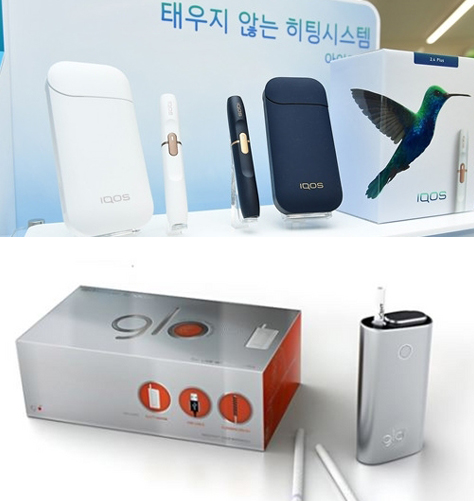The fight between the Ministry of Food and Drug Safety and the tobacco industry is intensifying over the results of a study on the safety of heat-not-burn cigarettes.
Foreign cigarette companies argued against the ministry’s recent announcement that e-cigarettes were as harmful as conventional products. They claimed that the ministry’s study had an error in measuring toxic materials. In rebuttal, the ministry said the study used an internationally accepted test model.

British American Tobacco (BAT) Korea on Monday last week pointed out that the emissions of harmful chemicals from e-cigarettes were significantly lower than those from ordinary cigarettes.
Philip Morris Korea also claimed at a news conference on Monday that the ministry’s study was not credible. The company cited its study, saying heat-not-burn cigarettes reduced harm from toxic substances, compared to conventional tobacco.
However, the ministry and Shin Ho-sang, a professor of environmental science at Kongju National University, said there was no error in measuring chemicals in the ministry’s study.
“We used methods recognized not only in Korea but other countries, including Germany, China, and Japan. It is absurd that tobacco firms are saying their method was only right. However, no other entity approved Philip Morris’ test method,” said Kim Dal-hwan, a research officer at the ministry.
Ministry, tobacco firms argue using different analysis methods
There is no internationally recognized method to analyze e-cigarettes’ chemicals yet. What the ministry used was the analysis of the International Organization for Standardization (ISO) for conventional cigarettes and Health Canada (HC) that reflected the latest habits of smokers.
In an ISO test, testers open the cigarette filter’s perforation area to display the content of nicotine and tar of conventional tobacco. An HC test considers smokers’ actual habit of smoking, blocking the perforation area to analyze substances. An HC model assumes that more tobacco emissions go inside the body than those measured by an ISO test.
Using both of the methods, the ministry concluded that heat-not-burn cigarettes had more tar than conventional ones. Except for tar, e-cigarettes had less harmful chemicals.
However, e-cigarette sellers rebutted that the tar measuring was meaningless and that reduction in toxic materials shows that e-cigarettes were less dangerous.
Philip Morris Korea argued that the ministry’s study did not accurately measure the moisture content of e-cigarettes, although more than 80 percent of their products’ steam contains water.
The ministry and Shin, however, emphasized that Philip Morris’ analysis came from the company’s self-developed equipment, making it hard to validate it objectively.
“Tar is the total amount of smoke in the cigarette minus the amount of water and nicotine. However, Philip Morris Korea claims that the moisture content is too low under the ministry’s method, saying it should be analyzed by the device and test model developed by the company,” Shin told Korea Biomedical Review. “It is reasonable that the state uses an internationally accepted test method.”
Shin went on to say that the tobacco companies are responsible for proving their claim that “tar in heat-not-burn products has almost no harmful substances.”
“The heating method might reduce toxic chemicals found in the burning method. However, companies will have to unveil what kind of toxic materials could come out of the heating system, and prove that their use of additives is not harmful. To date, there is no evidence that such additives are less dangerous,” Shin said.
It was also natural that e-cigarettes had lower levels of nine harmful substances, except for tar, he added.
“When compared by nine toxic substances, it was natural that e-cigarettes contained only 10-20 percent of them because the study investigated the harmful materials that come out from the burning system,” he said. “However, if we think about it in the opposite direction, it may become a problem because such harmful materials were found even in the heating system.”
The Korea Health Promotion Institute’s national smoking cessation support center also agreed with the food and drug safety ministry, raising the need to interpret the results of Philip Morris’ study cautiously.
The center said the company’s research was not objective and that quoting a report of the World Health Organization was only a “simple interpretation.”
According to the WHO report that Philip Morris cited, tar is not an absolute basis for tobacco control and therefore does not need to be measured, and tar values can be misleading.
However, Philip Morris’ quotation was not an interpretation considering the entire context of the WHO report but a straightforward interpretation of the sentence alone, the smoking cessation support center said.
“The WHO’s ‘Report on the Scientific Basis of Tobacco Product Regulation (2015)' is a book of 238 pages, mainly explaining which substances should be preferentially measured in tobacco emissions,” the smoking cessation support center said. “The report emphasizes that it is more important to investigate toxic substances individually than to examine the total amount of tar, which is a collection of harmful substances.”

